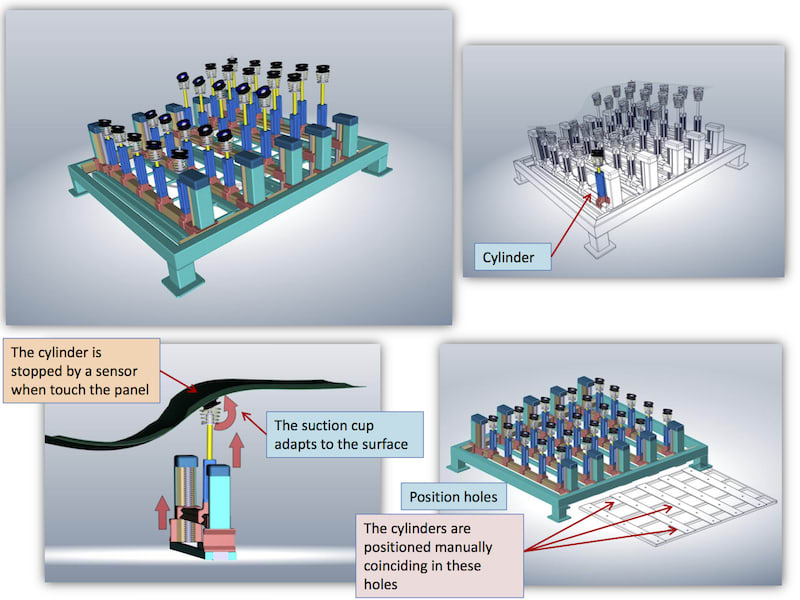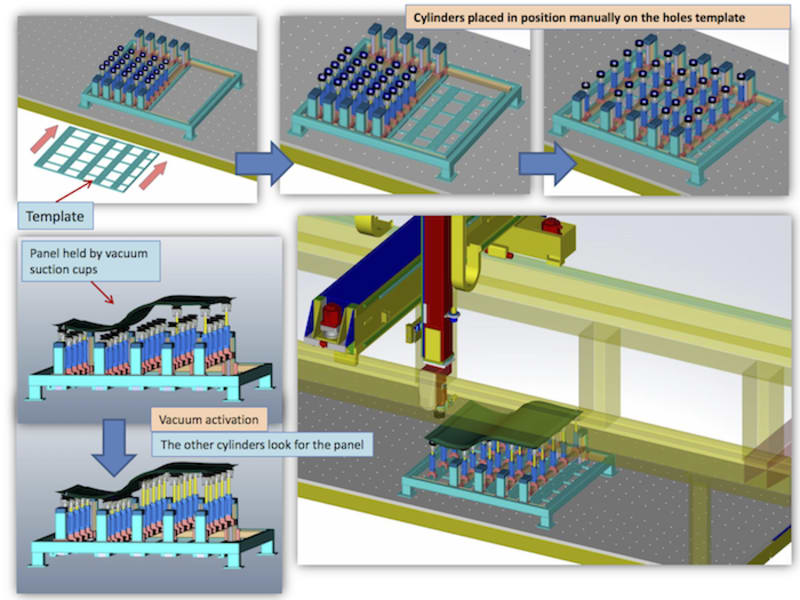When making a panel of carbon fiber, as a general rule to finish the process, these panels have excess measures or need special operations of numerical control. These operations are performed with a numerical control (NC) machine. In these NC machines it is necessary to fasten the panel in a suitable way to machine it. There are two ways to fasten the panel in the NC machine, with vacuun tools or with flexilble table.
* Vacuum tools:
Is a machined part with the shape of the piece. On the surface this tool has been machined a few slots to create the vacuum.
Advantage:
-The tool can be used in any numerical control machine, since the tool is independent of the control system of the machine.
Disadvantages:
-The tool has a high price.
-It only use to mechanize a single piece.
-Probability of manufacturing errors.
-High storage space in factory.
*Numerical control machines with flexible table:
The alternative that currently exists in the market, to not use vacuum tools, are numerical control machines with flexible tables.
The numerical control machines has a table with a series of pneumatic distributed, with suction cups at its ends. These cylinders with suction cups are those that will adapt to the shape of the panel. To do this, they are each positioned independently with the numerical control of the machine.
Advantage:
-In this flexible tool you can adapt all the panels.
Disadvantages:
-High price of the CN machine.
-Most of the factories already have conventional machines, which means that the renovation of machines with flexible tools is an excessive expense.
-Complex CN machine.
*FLEXIBLE TOOL (Alternative solution)
The objective of this project is to make a hybrid tool which contains the advantages of vacuum tools and flexible tools.
-This tool will be independent. That is, no numerical control machine is needed for the control.
-Can be positioned on any machine. So it is not necessary a renovation of the machinery in the factory.
-The manufacture of this tool can be made with elements and parts that are currently on the market, therefore the manufacturing cost can be reduced.
-No high precision required for fabrication.
The tool consists of a series of electric cylinders, which have a proximity sensor at the end.
The cylinders can be moved freely on the y axis, with the help of guides and on the z axis with electric motors. These cylinders will be distributed independently, with the help of a template. This template will be unique for each piece.
We will position the machine head in a certain exact position (x, y, z). The electric cylinder will extend to touch the head of the machine with the help of the sensor, and will activate the vacuum. This step will be repeated with 3 or 4 cylinders.
With these positioned cylinders, we can place the fiber panel. The rest of the cylinders will look for the panel to position itself.
Like this entry?
-
About the Entrant
- Name:Gonzalo Guillén Solsona
- Type of entry:individual
- Software used for this entry:CATIA and 3DVIA
- Patent status:none








